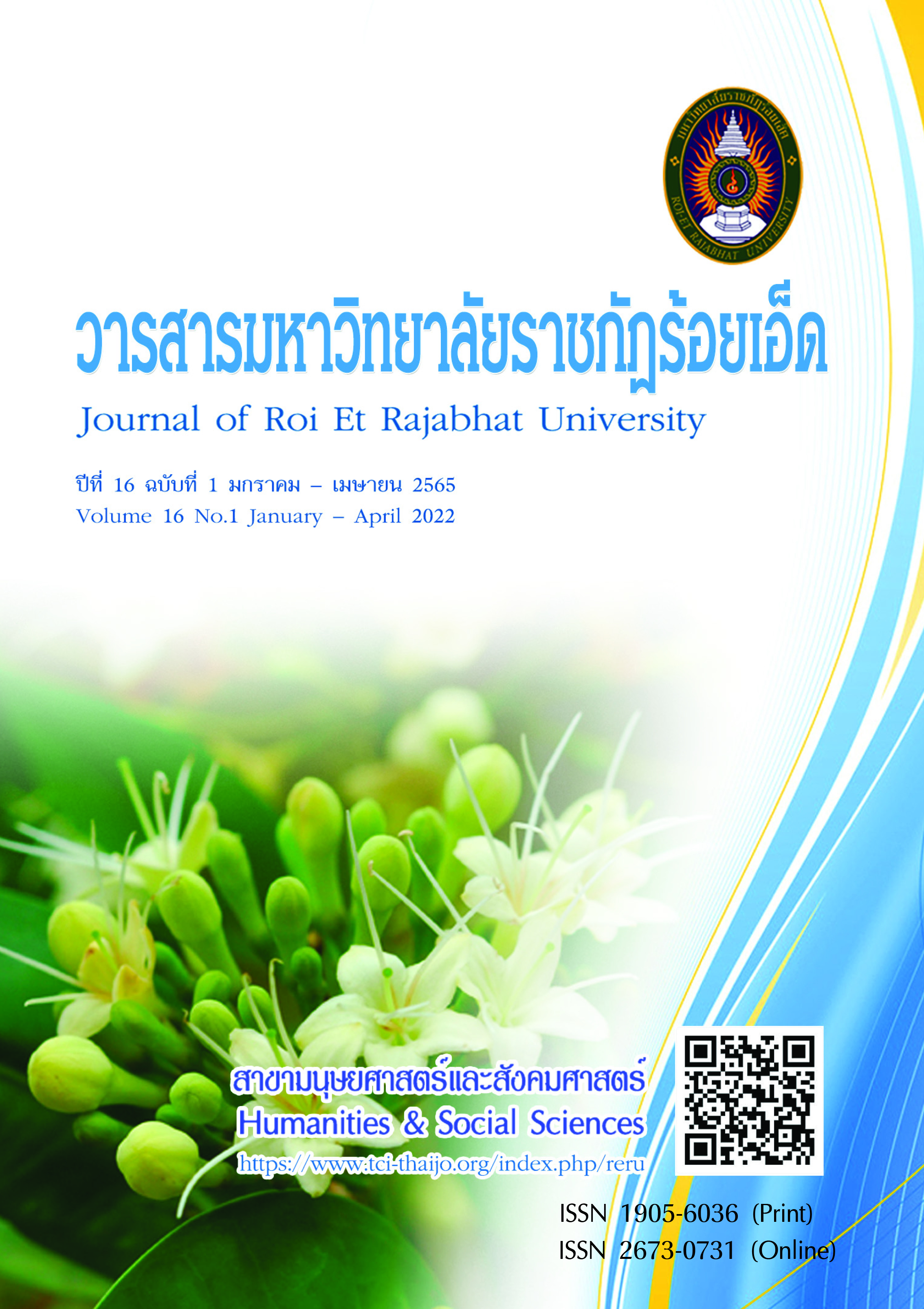Smart Growth: Trend of Low Density Residential Growth in Khon Kaen Province
Keywords:
Land Use, Low Density, Smart GrowthAbstract
This article have purposes to compare land management of low-density residence according to the Town Planning Act, B.E. 2532 (1989), 2542 (1999), and 2560 (2017) with urban growth in term of population and to propose guidelines for town planning based on smart growth concepts. These concepts focus on developing the original city center, controlling the city expansion, building a compact city, promoting high density and blended use of land, and conserving green and agricultural areas to reduce the cost of public services and public utilities. This study was blended research investigating secondary data of demographic statistics and physical data. The secondary data for analysis included land use plans in Khon Kaen Province in 1989, 1999, and 2017, and population statistics in 1997, 2007, and 2018.
For the land management of low-density residence in Khon Kaen Province, it was found that
the growth rate has been higher every year when the land use plan is updated. The expansion mainly reaches the North and the West of the city of Khon Kaen. Changes were found in the rural and agricultural land use
of 2.63 and 5.75 square kilometers. These changes were inconsistent with the concepts of smart growth. Guidelines for town planning based on smart growth concepts such as promoting high density, blended use of land, and conserving green and agricultural areas in the suburb are proposed in this study.
References
กฎกระทรวงผังเมืองรวม. (2532 ธันวาคม 30). ราชกิจจานุเบกษา. เล่ม 116 ตอนที่ 235.
กฎกระทรวงผังเมืองรวม. (2542 ธันวาคม 20). ราชกิจจานุเบกษา. เล่ม 116 ตอนที่ 130 ก.
กฎกระทรวงผังเมืองรวม. (2560 เมษายน 26). ราชกิจจานุเบกษา. เล่ม 136 ตอนที่ 46 ก.
การพัฒนาเศรษฐกิจแห่งชาติไทย. (มปป). การพัฒนาเศรษฐกิจฉบับที่1. สืบค้นเมื่อ 5 พฤศจิกายน 2563,
จาก https://sites.google.com/site/karphathnasersthkicthiy/home/kar-phathna-sersthkic-chbab-thi1
จิตรภณ สุนทร. (2560). การวิเคราะห์การเปลี่ยนแปลงการใช้ประโยชน์ที่ดินในเขตอำเภอเมืองนครปฐม จังหวัดนครปฐม, Veridian E-Journal, Silpakorn University, 11(2), 82-95.
ชวลิตา ศิริภิรมย์. (2548). ผลกระทบทางสังคมจากการขยายตัวของพื้นที่อยู่อาศัยในเขตสายไหม กรุงเทพมหานคร.
สืบค้นเมื่อ 25 สิงหาคม 2562, จาก http://cuir.car.chula.ac.th/handle/123456789/26804
เทศบาลตำบลบ้านเป็ด. (2561) ข้อมูลพื้นฐาน. สืบค้นเมื่อ 6 สิงหาคม 2562,
จาก http://www.banped.org/content.php?name=general
เทศบาลนครขอนแก่น. (2017). ขอนแก่นเมืองอัจฉริยะ. สืบค้นเมื่อ 23 สิงหาคม 2562,
จาก http://www.kkmuni.go.th/pdf-download/smart-city-60.pdf
บัวพันธ์ พรหมพักพิง, ยรรยงค์ อินทร์ม่วง และมนต์ชัย ผ่องศิริ. (2562). เมืองขอนแก่น : การเติบโต ความท้าทาย และโอกาส. นนทบุรี: สำนักพิมพ์สื่อตะวัน.
พนิต ภู่จินดา และยศพล บุญสม. (2559). แนวคิดการพัฒนาเมืองต้นแบบ. เจ-ดี. วารสารวิชาการ การออกแบบสิ่งแวดล้อม, 3(1), 21-43.
ระบบสถิติทางทะเบียน.จำนวนประชากร. สืบค้นเมื่อ 10 สิงหาคม 2562, จาก http://stat.bora.dopa.go.th/stat/statnew/statTDD/
Brunner, A. (2013). The effect of urban sprawl on daily life: smart growth implementation of Atlantic Station Transportation Research Board 92nd Annual Meeting, Transportation Research Board, Washington, DC.
Saizen, I., Mizuno, K. and Kobayashi, S. (2006). Effect of Land Use Master Plans in the Metropolitan fringe of Japan. Landse Urban Plann., 78(4), 411-422.
Shrivastava, R. and sharma, A. (2011). Smart Growth: A Modern Urban Principle. Architecture Research, 2011(1), 8-11.
Smart Growth Asia. (2013). Creating a strategy for urban revitalization based on smart growth Concept. Retrieved August 16, 2019, From http://oknation.nationtv.tv/blog/smartgrowth/2013/02/06/entry-1
Smart Growth Thailand. (2017). Khon Kaen City Development SMART CITY. Retrieved August 23, 2019. From http://www.smartgrowththailand.org/khonkaen-smart-city-lrt/
Song, Y. (2005), The Smart Growth and Urban Development Pattern: a comparative study. International Regional Science Review, 28(2), 239-256.
Downloads
Published
How to Cite
Issue
Section
License
Copyright (c) 2022 Roi Et Rajabhat University

This work is licensed under a Creative Commons Attribution-NonCommercial-NoDerivatives 4.0 International License.
บทความที่ได้รับการตีพิมพ์เป็นลิขสิทธิ์ของวารสารมหาวิทยาลัยราชภัฎร้อยเอ็ด
ข้อความที่ปรากฏในบทความแต่ละเรื่องในวารสารวิชาการเล่มนี้เป็นความคิดเห็นส่วนตัวของผู้เขียนแต่ละท่านไม่เกี่ยวข้องกับมหาวิทยาลัยราชภัฎร้อยเอ็ด และคณาจารย์ท่านอื่นๆในมหาวิทยาลัยฯ แต่อย่างใด ความรับผิดชอบองค์ประกอบทั้งหมดของบทความแต่ละเรื่องเป็นของผู้เขียนแต่ละท่าน หากมีความผิดพลาดใดๆ ผู้เขียนแต่ละท่านจะรับผิดชอบบทความของตนเองแต่ผู้เดียว





